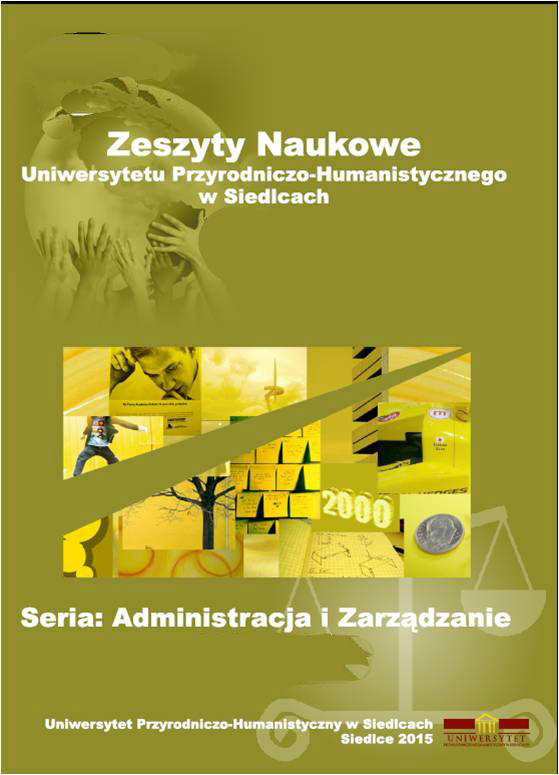The Level of Indebtedness of Communes in the Area of Ostrołęka-Siedlce Subregion
The Level of Indebtedness of Communes in the Area of Ostrołęka-Siedlce Subregion
Author(s): Monika WakułaSubject(s): National Economy, Public Finances
Published by: Uniwersytet Przyrodniczo-Humanistyczny w Siedlcach
Keywords: District management; District budget; Indebtedness; Finance
Summary/Abstract: Jednostki samorządu terytorialnego mają ograniczone możliwości finansowania realizowanych przez nich zadań. Chcąc sprostać potrzebom społeczności lokalnej, poprawić poziom atrakcyjności zajmowanego terenu, muszą korzystać ze zwrotnych źródeł finansowania. W celu zabezpieczenia się przed utratą płynności finansowej powinny bardzo uważnie analizować swoją sytuację finansową i oceniać bezpieczeństwo finansowe podejmowanych decyzji. Zaciąganie długu przez samorządy w głównej mierze jest warunkowane przez prawo. Ustawodawca w powszechnie obowiązujących przepisach prawa stosował różne ograniczenia zadłużania się jednostek samorządu terytorialnego. W ustawie o finansach publicznych z 2009 roku uległy one zmianie. Wprowadzony został tzw. indywidualny wskaźnik zadłużenia jednostki samorządu terytorialnego. Nowy limit zaczął obowiązywać od roku 2014. Celem artykułu będzie próba przedstawienia uwarunkowań prawnych wpływających na zarządzanie długiem gminy i analiza na tym tle wyniku finansowego i poziomu zadłużenia samorządów gminnych w latach 2009-2014. W opracowaniu wskazano przyczyny, źródła i kierunki wykorzystywania zwrotnych źródeł finansowania na badanym terenie. W opracowaniu wykorzystano klasyczne metody badawcze, tj: analizę literatury przedmiotu, aktów prawnych oraz analizę porównawczą poziomu podstawowych kategorii budżetowych mających wpływ na poziom zadłużania się gmin. Porównań dokonano pomiędzy gminami w Polsce, województwie mazowieckim oraz podregionie ostro- łęcko-siedleckim w podziale na gminy wiejskie, miejskie i miejsko-wiejskie.(abstrakt oryginalny) Units of territorial government have limited financial possibilities to carry out tasks. If they want to meet the demands of the local community and to improve the level of attractiveness of the area occupied by them, they have to use repayable sources of financing. In order to protect themselves from a liquidity crisis, units should analyze their financial situation very carefully and evaluate financial safety while making decisions. Incurring debts by local governments is regulated mainly by the law. A legislator introduced various limits concerning running up a debt in generally applicable regulations. The Public Finance Act of 2009 changed the regulations. An individual debt ratio for local government units was introduced. The new limit came into effect in 2014. The aim of the article is an attempt to present legal conditions influencing debt management of a commune and the analysis of financial results based on the conditions as well as the level of indebtedness of local governments of communes between 2009 and 2014. The elaboration indicates causes, sources and directions of using repayable sources of financing on a given area. The article uses conventional research methods, i.e. the analysis of the subject literature, legal acts and comparative analysis of the level of basic budgetary categories influencing the level of commune indebtedness. The comparison was carried out on communes in Poland, the Mazovia province and the subregion of Ostrołęka-Siedlce with the division into rural, urban and urban-rural communes. (original abstract)
Journal: Zeszyty Naukowe Uniwersytetu Przyrodniczo-Humanistycznego, seria Administracja i Zarządzanie
- Issue Year: 41/2017
- Issue No: 114
- Page Range: 71-85
- Page Count: 15
- Language: English

